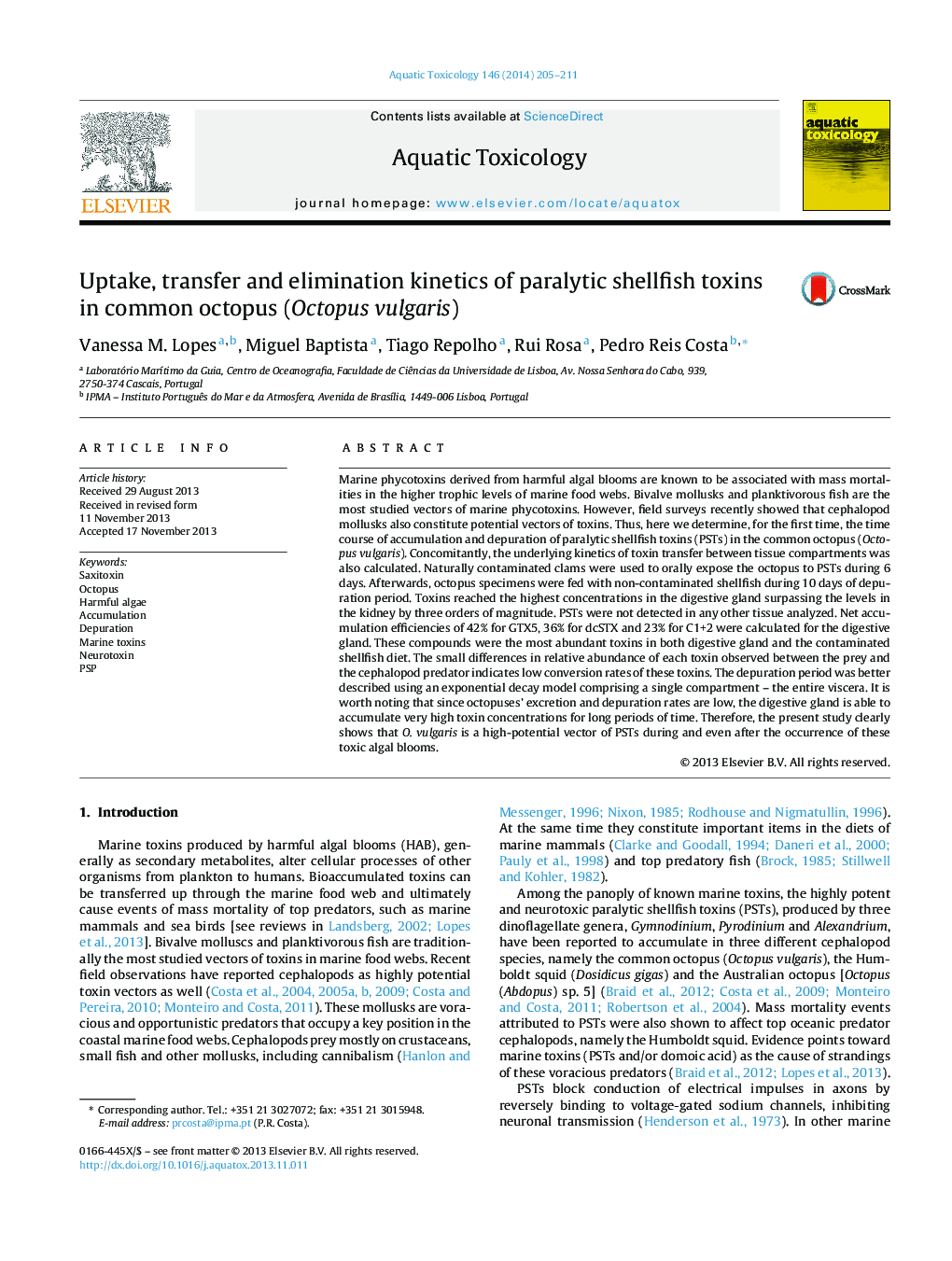| کد مقاله | کد نشریه | سال انتشار | مقاله انگلیسی | نسخه تمام متن |
|---|---|---|---|---|
| 6382636 | 1625959 | 2014 | 7 صفحه PDF | دانلود رایگان |

- Octopus was orally exposed to PSP toxins.
- Uptake/elimination kinetics were determined.
- Net accumulation efficiencies up to 42% were calculated.
- Low rates of depuration and tissue transfer were calculated.
- Octopus is indicated as high potential vector of PSP toxins.
Marine phycotoxins derived from harmful algal blooms are known to be associated with mass mortalities in the higher trophic levels of marine food webs. Bivalve mollusks and planktivorous fish are the most studied vectors of marine phycotoxins. However, field surveys recently showed that cephalopod mollusks also constitute potential vectors of toxins. Thus, here we determine, for the first time, the time course of accumulation and depuration of paralytic shellfish toxins (PSTs) in the common octopus (Octopus vulgaris). Concomitantly, the underlying kinetics of toxin transfer between tissue compartments was also calculated. Naturally contaminated clams were used to orally expose the octopus to PSTs during 6 days. Afterwards, octopus specimens were fed with non-contaminated shellfish during 10 days of depuration period. Toxins reached the highest concentrations in the digestive gland surpassing the levels in the kidney by three orders of magnitude. PSTs were not detected in any other tissue analyzed. Net accumulation efficiencies of 42% for GTX5, 36% for dcSTX and 23% for C1+2 were calculated for the digestive gland. These compounds were the most abundant toxins in both digestive gland and the contaminated shellfish diet. The small differences in relative abundance of each toxin observed between the prey and the cephalopod predator indicates low conversion rates of these toxins. The depuration period was better described using an exponential decay model comprising a single compartment - the entire viscera. It is worth noting that since octopuses' excretion and depuration rates are low, the digestive gland is able to accumulate very high toxin concentrations for long periods of time. Therefore, the present study clearly shows that O. vulgaris is a high-potential vector of PSTs during and even after the occurrence of these toxic algal blooms.
Journal: Aquatic Toxicology - Volume 146, January 2014, Pages 205-211